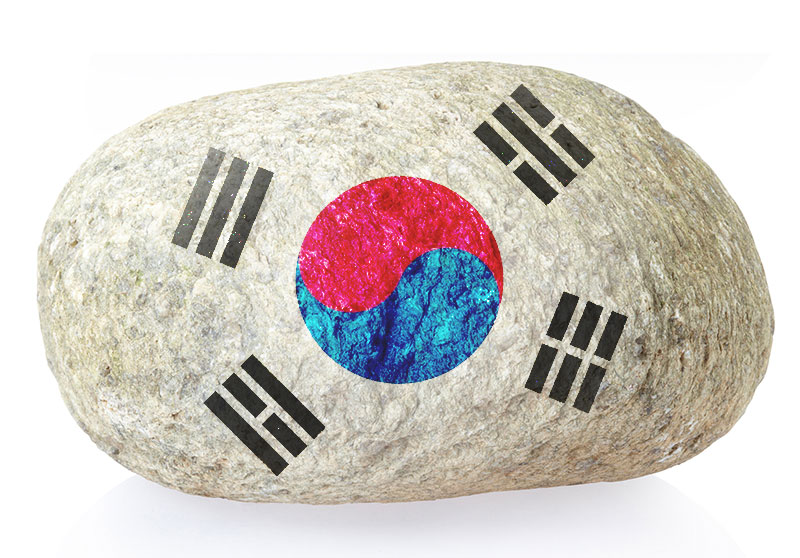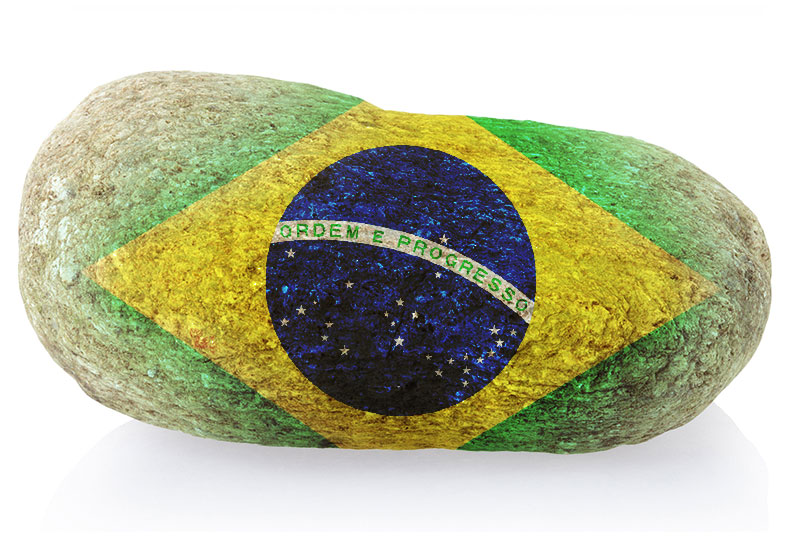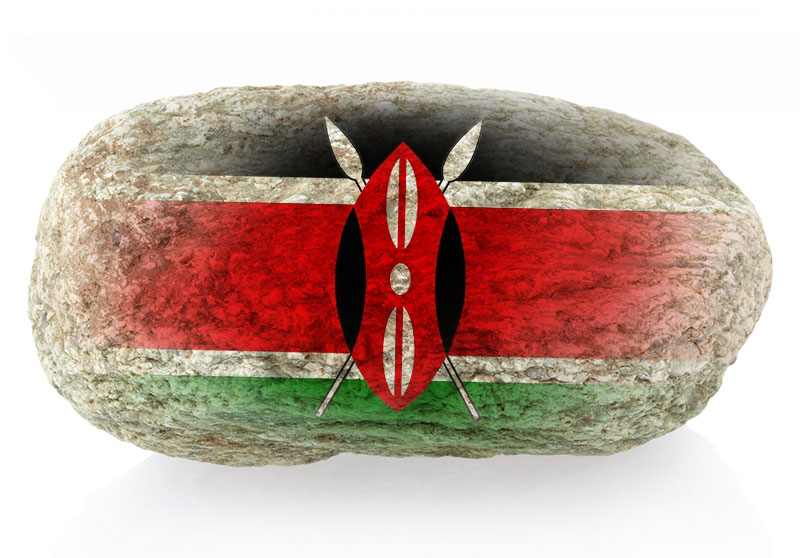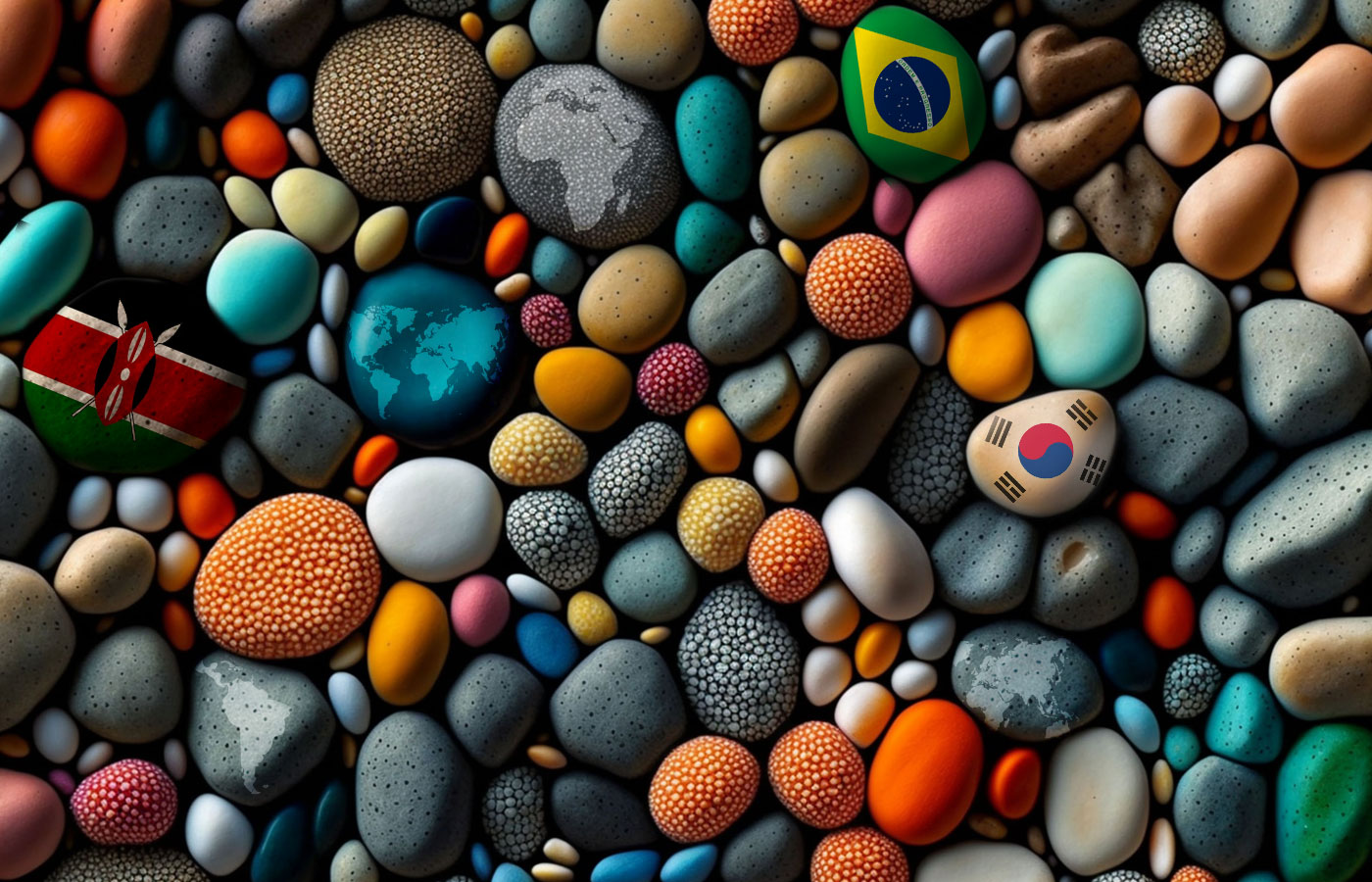When David, the man after God’s heart, was about to face the giant, Saul’s battle gear was not only unnatural but also inefficient for David (1 Sam 17:38-40). While Saul’s consideration deserves high regard, it worked better for David to choose the tools that were readily familiar to his daily use on the way to the battlefield. This illustration wittingly infers the inadequacy of ‘wearing someone else’s tunic, armor, and helmet’ in the spiritual battlefield of world missions. It suggests the need of finding and utilizing the missionary’s own cultural ‘stones’ that are familiar and conversant with his background.
We have the need of finding and utilizing the missionary’s own cultural ‘stones’ that are familiar and conversant with his background.
Mission Movements: Past and Present
We need to be keenly aware of what God is doing in the present panorama of world missions. Today missionaries from the Majority World increasingly join the global workforce,[1] and it is not difficult to meet a Nigerian, Kenyan, or Ghanaian from Africa, a Korean from Asia, or a Brazilian from South America in the pool of missiological bodies. However, some of their missionary strategies are merely copied and coated with the preceding Western methodology rather than facilitated and contextualized with their indigenous cultural attributes. In the up-to-date trend of mission history, missionary candidates who have their sending bases in the Majority World find it more advantageous to connect intimately with those of similar backgrounds in other Majority World nations where they are sent to minister.[2]
Every culture possesses a valuable heritage to contribute toward the cause of the Great Commission. The Western church possesses an incomparable experience and a rich volume of mission legacy, and she legitimately has much to offer to the global body of Christ. In previous generations, Western missions strategy focused mainly on reaching an ‘under-developed’ Majority World.[3] Preceding missionaries of the modern missions movement have zealously devoted themselves to pioneering mission centers out of their toilsome labors and restless explorations, even in remote jungles and villages. The seeds they have sown were dispersed into the world, and we now hear of rising missionary movements in Asia, South America, and Africa, germinated from their sacrificial endeavors.[4]
With the modern missions movement (which began with William Carey) in our rear-view mirrors, the next genre of missionary tasks demands fractionized and micro-focused approaches—more attention should be given to reaching smaller tribes and groups that remain under-reached rather than to the masses that already have the gospel easily accessible to them. Different generations call for different assignments in the grand missio Dei. Paul said, ‘I planted the seed, Apollos watered it, but God has been making it grow’ (1 Cor 3:6). God has raised different ethnicities for missions at different times in history for a specific purpose—God has chosen them and their ethnical backgrounds to bless the nations (Gen 12:2–3).

Korean/Asian Distinctives
For instance, Koreans have developed over the centuries three cultural distinctives that are essentially exhibited in their communicational concepts: chae-myun, kibun, and nunchi.[5] Similar to other Asian cultures, Koreans emphasize the importance of chae-myun (commonly translated as face-saving) which highly values reputation, influence, dignity, and honor. They would consider disguising one’s true feelings and putting on a stoic face as respectable. Kibun and nunchi concepts are rather unique to Koreans. Kibun can be vaguely translated as mood, while nunchi points out one’s sense of assessing others’ moods (kibun). Because Korean cultural heritage innately articulates the honor-shame orientation,[6] its collectivistic and face-saving elements can unquestionably shorten the process of cultural adaptation in surrounding nations and Asia at large, where parallel cultural notions are upheld. Although their honor-shame ‘codes’ may be diverse and often personal—what may be honorable or shameful vary by ethnic group, area, and generation—Korean missionaries still have fewer cultural adjustments to adapt to in other honor-shame cultures.
Every culture possesses a valuable heritage to contribute toward the cause of the Great Commission.
However, such indigenous cultural practices could be interpreted as deceitful if they are implemented with wrong motives. But they could positively serve as tools to increase sensitivity to the needs of the host culture. It is a great intercultural feature for Koreans to be keenly observant of the local people and their behaviors on the mission field. Sensitively understanding and caring for the needs of others through the eyes of kibun and nunchi can demonstrate Christlike humility in serving others. Korean and other Asian missionaries should consider applying the concept of chae-myun to motivate and encourage local Christians with similar cultural traits to grow in their spiritual maturity and independence from missionaries. With such cultural connections and natural benefits, new workers from Korea, and Asia in general, can embark on their mission with more confidence.

Brazilian/South American Distinctives
Samba dance and the Brazilian carnival festival symbolize the passionate and mirth-cherishing cultural traits of Latin Americans. Brazilians’ enthusiastic preparation and hefty investment in the yearly carnival event attract attention worldwide. Excitement and passion for the kingdom life, not carnal desires indulged in dissipation, can be also derived and infused from the same cultural trait. When this passion is channeled to gospel sharing and relationship building, it serves as a witness of a joyous kingdom lifestyle. To South American Christians, undivided devotion to worship is paramount. Their worship portrays and creates an atmosphere of heaven on earth. Our God, an expert in turning ashes into a crown of beauty (Isaiah 61:3), has been using this cultural trait to raise Brazilian cross-cultural workers to voice the gospel to the nations. It is no wonder Brazil was listed as the second runner-up in 2010 by the number of sent missionaries.[7]

Kenyan/African Distinctives
In this chapter of mission history, missionaries from Nigeria, Kenya, Ghana, and Africa at large are increasingly found reaching out to fellow Africans and even evangelizing post-Christendom Europe.[8] We have seen this effective operation at the Evangelical Alliance for Preacher Training/Commission (EAPTC) by raising Kenyan missionaries to reach their own continent with less cultural hurdles to tackle. At the dawn of the 21st century, when we opened our missions training school in Nairobi, it was still a rare event. However, it seemed the Lord was pleased by our mere obedience and the resilient spirit of our Kenyan missionaries and gave us some blessings and fruits in the years to follow. It was through the efforts of those Kenyan cross-cultural gospel workers that our work expanded into scores of Bible training centers and hundreds of new church plants in numerous African nations.[9]

Implications for Contemporary World Mission
It is tactical for the global body of Christ in the current page of missio Dei to develop cross-cultural workers who will cultivate their own cultural uniqueness, utilize it for the benefit of the Great Commission, and mobilize it to reach under-reached groups in similar cultural backgrounds. We must not merely replicate the standardized methods of Western missions of the past, but find and facilitate our own cultural approaches that are suitable for missions today. We need to be open to the multifaceted nature of missions, which is not just a one-dimensional narrative of reaching the world driven by traditional missions. As the world is expected to become more diverse and complex in the post-pandemic era, it is now time to consider multidirectional methodologies.[10]
It is tactical for the global body of Christ to develop cross-cultural workers who will cultivate their own cultural uniqueness, utilize it for the benefit of the Great Commission, and mobilize it to reach under-reached groups.
Raising handpicked missionary candidates who are not afraid of healthy analysis of their own cultures, who apprehend cross-cultural contextualizations of the gospel, and who willingly go to surrounding under-reached target cultures will cut through red tape. Missionary screening processes and pre-departure trainings can also consider adding a track to guide a candidate to a deeper discovery of their cultural strengths. Those cultural strengths can be tailored into personalized ‘missionary clothing’ through adequate contextual uptake instead of wearing the traditional missionary gear that may not be comfortable. We all go out in the name of the Lord Almighty (1 Sam 17:45) but ought to go out with the ‘stones’ we are familiar with, not with ‘Saul’s armor’. Every national church should advance with a missionary strategy that is conversant with its home culture and at the same time tailored relevantly to the field culture.[11] Knowing one’s cultural strengths and harnessing them as cross-cultural advantages on top of Christ’s incarnational principle is key.
Considering the statistics that the remaining under-reached areas of the world are knitted with the Creative Access Regions (CAR) where anti-Western sentiment is latent and mass evangelism hardly takes place,[12] this strategy can help navigate missionaries and mission leaders through the uncharted waters of redemption. That is why God is raising more Majority World missionaries in this time and age, who are accustomed to a less prosperous and often developing world. Majority World missionaries possess cultural elements that can be advantageous mechanisms if they are adequately utilized. Those elements are God-given resources that every global Christian is called to cultivate as Christ’s steward.[13]
Endnotes
- Rose Dowsett, Cape Town Commitment: A Confession of Faith and a Call to Action (Peabody, MA: Hendrickson, 2012), 2.
- Paul Sungro Lee, Disciples of the Nations: Multiplying Disciples and Churches in Global Contexts (Eugene, OR: Wipf and Stock, 2021), 79.
- For further study on the inception of the modern missions movement, see William Carey, Enquiry into the Obligations of Christians to Use Means for the Conversion of the Heathens (London, 1792), quoted in Catherine Hall, ‘Missionary Stories: Gender and Ethnicity in England in the 1830s and 1840s,’ Cultural Studies, eds. Lawrence Grossberg, Cary Nelson, and Paula Treichler (New York: Routledge, 1992), 247.
- Hwa Yung, ‘The Shift of the Center of Gravity of the Church from the West to the Majority World,’ Transformation 39, no. 2 (2022): 77.
- For more exhaustive discussion of these Korean cultural concepts, see Boye Lafayette De Mente, The Korean Mind: Understanding Contemporary Korean Culture (Clarendon, VT: Tuttle Publishing, 2018).
- Jayson Georges, ‘The Good News for Honor-Shame Cultures: Uncovering A Core Aspect of God’s Mission,’ Lausanne Global Analysis (March 2017), https://lausanne.org/content/lga/2017-03/the-good-news-for-honor-shame-cultures.
- ‘Christianity in Its Global Context, 1970-2020: Society, Religion, and Mission,’ Center for the Global Study of Christianity, June 2013, https://www.gordonconwell.edu/wp-content/uploads/sites/13/2019/04/2ChristianityinitsGlobalContext.pdf.Editor’s Note: See also ‘Highlights of Christianity in its Global Context, 1970-2020’ by Todd Johnson and Gina Bellofatto in the June 2013 issue of Lausanne Global Analysis, https://lausanne.org/content/lga/2013-06/highlights-of-christianity-in-its-global-context-1970-2020.
- Afe Adogame, The African Christian Diaspora: New Currents and Emerging Trends in World Christianity (London, UK: Bloomsbury Academic, 2013), 181-182.
- This missions training curriculum is available online for purchase at Amazon.com in English, Spanish, French, and Portuguese, and also in Amharic on a personal request to the author by email. See Paul Sungro Lee, Missionary Candidate Training: Raising Up Third World Missionaries (Merrifield, VA: Evangelical Alliance for Preacher Training/Commission, 2008), 4.
- Paul Sungro Lee, Doing Missions in Difficult Contexts: Omnidirectional Missions (Eugene, OR: Wipf and Stock Publishers, 2022), 11.
- David Hesselgrave and Ed Stetzer, eds. MissionShift (Nashville, TN: B&H Publishing Group, 2010), 144-153.
- For more information, see Karl Muller, Theo Sundermeier, Stephen B. Bevans, and Richard H. Bliese, eds. Dictionary of Mission: Theology, History, Perspectives. Vol. 24. (Eugene, OR: Wipf and Stock Publishers, 2006).
- Editor’s Note: See ‘Are Foreigners Still Needed in the Age of Indigenous Mission?’ by Kirst Rievan in the July 2021 issue of Lausanne Global Analysis, https://lausanne.org/content/lga/2021-07/are-foreigners-still-needed-in-the-age-of-indigenous-mission.

